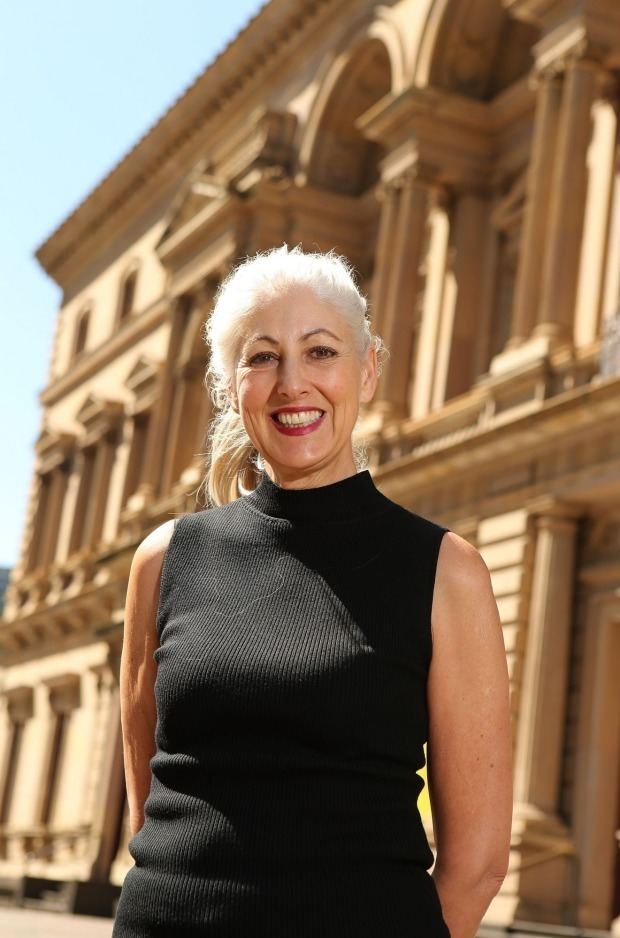Nationality Australian Occupation Architect | Name Jill Garner Alma mater RMIT University | |
 | ||
Website | ||
MAA Talking Homes Jill Garner
Jill Garner is an Australian architect. She is a principal of Garner Davis Architects and Victorian Government Architect.
Contents
- MAA Talking Homes Jill Garner
- Early life and education
- Architectural work
- Wagga Wagga Civic Centre
- Teaching
- Early career
- Own Architectural firm
- Wodonga TAFE
- Awards and International recognition
- References

She co-founded Garner Davis Architects in 1990 and holds the role of Principal. She joined the Office of the Victorian Government Architect as Associate Government Architect in 2010, before becoming Government Architects in 2015. She is one of the first graduates of Masters by Design program offered at RMIT, and her firm received early recognition through winning an international design competition in 1994.

She has consistently advocated the importance of architectural design and innovation.

Early life and education
Jill first developed an interest in architecture visiting a friend’s house designed by Robin Boyd and took interest in its layout and was fascinated by the unique quality of light, space and response to site.
She was educated in Melbourne Girls Grammar School and later enrolled into RMIT University’s Bachelors in Architecture program (1978 - 1984), during which she met Lindsay Davis. She later continued to pursue her Masters in RMIT and was one of the first graduates of the innovative practice-based research course in 1996.
Architectural work
The Wagga Wagga Civic Centre project emerged the winner in an open two- stage architectural competition held by the Wagga Wagga City Council. Garner Davis’ proposal was awarded the commission for the Civic Centre. It was shortlisted (top 5) from 132 entries. The Civic Centre situated beside the Wollundry Lagoon accommodates both the Museum of the Riverina and the National Art Glass Collection. More than 40,000 people visit the Centre each year.
The building has four distinct facades with contrasting materials creating varying degrees of opacity. A play on surfaces is also used within the internal ‘street’, creating an illusion of ample space. The Civic Centre integrates culture. It is informative and act as an administrative facility of the city.
Wagga Wagga Civic Centre
In 1997, Sydney architect Stephen Varady organized an architectural competition in the city of Wagga Wagga to build a $12 million Civic Centre. Melbourne architects Jill Garner and Lindsay Davis who eventually won recently the complex. The Civic centre which can be considered a ‘constructed object’ includes council chambers, offices, a library, art and craft galleries, public service centres and leasable areas while the Civic Theatre (circa 1960) and the city’s original Council Chamber, have been retained on opposite corners of the site. The main building can be accessed from the eastern and western plazas.
The building containing multiple entrances is a product of details of the client’s brief and the architects’ personal vision. The Baylis Street entrance, provides access to the council facilities, customer service centre, library and art gallery off a skylit internal promenade called the Civic Arcade. The pathway continues towards a café, and culminates in the National Art Glass Gallery. This pavilion is positioned like a raft over the original riverbed where the lagoon once flowed to the Murrumbidgee, accommodating an intimate sculpture garden, which highlights the lines of the Civic Theatre.
The strength of Garner and Davis’ design stems from two sources. First, the architects work from a tradi-tion, in this case the ‘Melbourne School’, with particular reference to post-war modernists Robin Boyd and Roy Grounds. Second, they consistently apply the idea of the building as a three-dimensional mapping onto the site.
Teaching
She has taught architectural history, contemporary theory and design in RMIT and the University of Melbourne. She is frequently invited to various architectural events and has contributed to the industry through publications and journals, seminars, lectures both local and interstate. She has also been on award juries.
She is also an author on the Association of Consulting Architects Australia (ACA).
Early career
Jill Garner has worked in several of Melbourne’s influential design practices over ten years since graduating with her bachelor's degree. This led to the birth of Garner Davis Architects, which is supported by a variety of small commissions. She was later invited to join the Office of Victorian Government Architects(OVGA) in 2010 as an Associate Architect in the Department of Premier and Cabinet (VIC), which handles public policy matters.
Own Architectural firm
The St Kilda-based Garner Davis Architects was founded in 1990 by Jill and her partner, Lindsay Davis. The firm’s design philosophy is based on an inseparable nature of aesthetics, craft, form, space, narrative and the practicalities of occupation and operation. The practice has worked through refined project delivery systems.
The firm won the international design competition for the Wagga Wagga Civic Centre in 1995.
The practice’s projects include the Northcote Precinct Masterplan and the Morning Peninsula Customer Service Centre and the Mornington Library in 2001. The Masterplan won the 2004 Built Environment award for both Outer Melbourne and Regional Architecture. Some of her interior works includes Ivanhoe House, a Private residence situated by Bank of Yarra River and Talacko House, in Metung, Victoria completed in 1990.
According to Jill Garner, “The true value of (good) architecture lies in its capacity to integrate a solution to the mundane problems of occupation, with the capacity to change our perception of place, and the very best architecture integrates use with space, material and light in such a way that our senses soar.”
Wodonga TAFE
The new Wodonga TAFE building designed by Garner Davis Architects, consists of a library, art gallery,theatre and senior citizens' club. It is located in the city's cultural precinct and is akin to a succession of flexible spaces than an education institution.
One of the architects’ main concerns was the environment surrounding the new building, adjacent to a courtyard where the entrances to the cultural buildings lie.
The entrance, constructed from concrete, steel and timber battens, seems to peel away from the corner.
The western façade consists of extended embossed concrete panelled walls and timber battens for sun protection and is contrasted by generous glazing. The embossed concrete creates texture and depicts an abstracted aerial view of the Murray River system.
Beyond the glazed entry lies the reception area with a lime green laminate counter and a bench in the lobby, designed for students to use their laptops.A compelling feature of the atrium of the two-level building is the staircase, made from steel and glass. This temperature of this area is kept cool by louvred glass windows and skylight. Additionally, hot air purged through the louvres.
The ground level has four lecture rooms, complete with state-of-the-art technology. Retractable walls ensure each space can be enclosed or left open, creating continuous spaces. And each room has a kitchenette and storage areas made from dark timber veneer.
The administrative offices and a large boardroom which leads to an enclosed terrace can be found on the first floor of the Wodonga TAFE building, with timber batten walls to diffuse light.
Time constraints were another challenging aspect of the project. The architects were given a year to design, document and construct this building.
Awards and International recognition
The Wagga Wagga Civic Centre - The Civic Centre design proposal won an international design competition for new council offices, library, art galleries and cafe in 1994 and was completed in 1998.
National Art Glass Gallery (1998)
